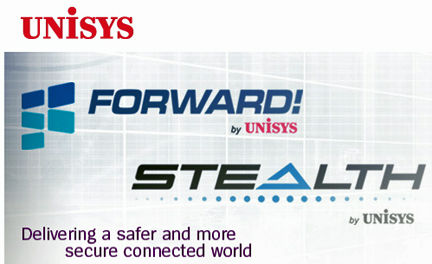
[SatNews] Unisys Corporation (NYSE: UIS) has helped the U.S. Department of Homeland Security Customs and Border Protection (CBP) to implement an advanced technology solution to speed the flow of pedestrian traffic at the world's busiest land border crossing in San Ysidro, California.
The San Ysidro crossing at the border of the U.S. and Mexico handles the passing of approximately 25,000 travelers each day. Under CBP's Land Border Integration (LBI) program, Unisys implemented kiosk-based, radio frequency identification (RFID) technology to more efficiently identify pedestrians crossing the border while improving security for CBP officers and providing a welcoming environment for the traveling public.
CBP awarded the LBI contract to Unisys in 2010. This is the eighth successfully reengineered pedestrian solution that Unisys has deployed through this program.
The pedestrian solution at San Ysidro was tailored to meet the site's unique requirements, with new functionality such as the ability for travelers to scan their documents at automated kiosks and wait in an on-deck area in advance of the CBP officer's booth – creating a ready queue of travelers for faster processing by CBP officers.
"The new pedestrian crossing system at San Ysidro is living proof that the smart application of technology can both improve security and enhance convenience for travelers," said Steve Soroka, group vice president, homeland security, Unisys Federal Systems. "Unisys takes pride in its work on the LBI program and looks forward to continuing to support CBP in its mission to protect the country's borders."
CBP and Unisys installed the first reengineered pedestrian system at El Paso, Texas, in November 2011. Since then, the system has been deployed to seven additional sites and more than 50 pedestrian lanes, processing more than 7.5 million travelers to date.
In a typical scenario using a reengineered pedestrian lane, travelers crossing the border on foot will approach a kiosk and scan their RFID-enabled travel documents on electronic document readers. While travelers proceed to the primary inspection area, information identifying the travelers will be relayed to officers who will then determine if they are admissible into the U.S.
The initial El Paso system included a combination of automated gates, mobile handheld devices, and RFID readers to more efficiently identify pedestrians crossing the border. Subsequent deployments have included a smaller kiosk solution. A version of the solution was adapted to support biometric verification and enabled the recent re-opening of the Big Bend National Park/Boquillas port-of-entry in Texas by integrating remote processing capabilities that allow travelers to cross with no officer present on site.
For more information regarding UNISYS, head over to: http://www.unisys.com/
The U.S. Customs and Border Protection website: http://cbp.gov/

